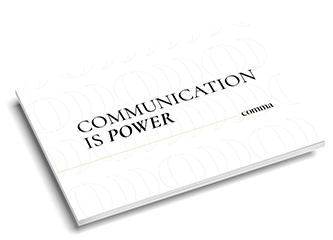Linda Seger tears out the pages of her world-renowned How to turn a good script into an excellent script pointing out that “to write an excellent script it is not enough to have a good idea, nor is it enough to put it down on paper (…) if you write, you will have to rewrite”. This statement can be applied word for word to the writing of journalistic articles and becomes even more obvious when you are dealing with content produced by a brand; Usually the product of a marketing team or a content creator, these texts are usually sales-oriented and move away from the routines of journalistic production.
Even so, product managers in companies of all industries and sizes are determined to reach media pages with this type of text. Very few, in fact, understand that in order to convert a marketing content, not only into an excellent journalistic article – as Seger would recommend – but into a decent journalistic article, the original text must go through an intense process of curation, rewriting and transformation.
Why we call it an article when we should say marketing content
How many times have we, as communication consultants, had to deal with content aimed at corporate blogs or company social channels, as the only raw material to achieve the longed-for press publication. And how often have we seen our partners in the organisations we work with become obsessed with “seeing their names in the papers”. The achievement of this objective, as if it were a sort of Grail of corporate reputation, is crucial for brands, aware that an appearance in a top-level media is an intangible asset that raises the notoriety of the company; Moreover, if used well, it can become a resource for sales channels;
In response to this demand, a process is set in motion which, unfortunately, does not always end with the appearance of the text or an adaptation of it in the main media to which the brands aspire; The first step is usually to manage expectations and deploy extra pedagogical effort in organisations. It is hard to make them understand that not everything is OK and that, in fact, only a few texts adapted to the guidelines, formats, language, structure and demand of journalistic production will end up being published;
This learning is based on being very clear about the main differences between a “news article” and a “journalistic article”. marketing text. It should be pointed out that it is not a matter of putting one format before the other; Each plays a role in corporate communications and both are often necessary to achieve strategic goals and engage with different stakeholders.
The importance of content marketing
Indeed, in a multi-channel world where brands can engage face-to-face with their potential consumers, the so-called content marketing has become an essential tool; in the arsenal of any firm seeking to create, foster and perpetuate a bond with its audiences through the digital world; And it is often the mainstay of communication relations for small and medium-sized companies, as it levels the playing field and allows them to compete on a level playing field with larger companies;
Another factor valued by brands is the cost-effectiveness, as compared to many other marketing strategies, it is often more cost-effective in the long run. While the creation of quality content may require upfront investment, once produced, it continues to generate value for a long time without requiring a significant increase in budget;
Typically, this technique is based on strategies based on the creation and distribution of relevant content, valuable in owned channels such as blogs, newsletters or social media, to attract, retain and convert a targeted audience. It helps brands to gain awareness and build long-term relationships with their audiences by developing a small-scale agenda of issues and focusing on those issues that are of interest to the company; It’s not only about meeting sales or lead generation goals, but also about position a company within an industry, drawing on its values, mission and impact, both situational and societal.
The leap into the media
But what happens when brands want to make the leap to media with such strategic content? Most often, no impact is achieved, generating enormous frustration in organisations; The same topics that had worked so well on their own channels hit an insurmountable wall when it came to attracting media interest;
This failure usually responds to more than one reason, but has its origin in transferring, point by point, the same plan that has led content marketing to success, hoping achieve an organic press presence immediately. However, this is an absolute utopia, as journalists tend to disdain any kind of content that has even the slightest promotional flavour; Thus, any writing that focuses on a product, values, or the impact of a company will be systematically ignored; This type of texts find their place in the media through theBranded Content o advertorial.
Companies also make another common mistake: they relate to the media without respecting thechannel codes. In other words, trying to achieve placements in the press, radio or television with texts that are not adapted to the formats, the level of the medium or its publication or broadcasting guidelines. This is why content curation plays a decisive role in adapting texts, elevating them and, going back to the beginning of this article, turning marketing content into journalistic content.
Finally, organisations tend to believe that their internal agenda is in the public interest; Nothing could be further from the truth. Companies must learn to include current affairs -understood as those conjunctural situations that affect all companies in their sector-, in their media content. The sectoral or even global agenda, as a Trojan horse when it comes to landing in the media, through texts covering broad topics, in order to gain authority and rise as an opinion leader, either as a company or through its speakers. The skill of the good content curator is to link these issues of general interest to the strategic issues of the organisation, incorporating the key messages through the storytelling.
The 5 W’s of content curation
While all of the above would be desirable, the day-to-day life of organisations is much more prosaic and, more often than not, marketing content is the only text available for deploying media relations; In such a case, as Seger said, we will have to rewrite, in order to adapt the original text to the needs of the media, the objective pursued and the desired impact;
Answering the following questions can help guide the healing process:
- What do we want to achieve with this text? We seek to disseminate an idea in as many media as possible, making pedagogy about a topic so that journalists can use this content in their daily work; Or we aspire to appear in the press as an opinion writer; Clarifying this question will help us to format the article, decide the narrative structure of the article and optimise the language;
- Who do we want to tell? We address either a generalist audience or a rather specialised audience; Do potential readers already have a context or do we need to set out the facts comprehensively? Knowing your target media audiences will determine to a large extent the depth of your content;
- Where do we want it to be published? Let’s define whether the article is addressed to a generalist or a specialised media; Is it print or broadcast media? Do we pursue a placement in a particular section, such as a column in the opinion section of a newspaper? Having these clear ideas will guide us in aspects such as the length of the article and will also mark the lexicon and the morphosyntax.
- When do we want it to appear? It is essential that we are clear about whether we are dealing with a timeless issue or whether it is linked to the present day; If our content satisfies a real need for information, either because it is related to the media agenda or because it is content linked to the seasonality of certain events (Christmas, summer, sales), it increases its chances of being placed;
- ¿Why we believe this text has newsworthiness? Does it transcend our particular or niche focus and affect our sector, other sectors or society? If the answer is that it does not, even if we have put the original text through all possible rewriting processes, perhaps we simply do not have a good journalistic article in our hands;
Media relations, a long-distance journey
In addition to all of the above, it only remains to underline some issues about the relationship between a company and the media that we consider fundamental, since there is little (or no) point in rewriting content and turning it into an excellent journalistic article if a proper and professional relationship with the media has not been cultivated beforehand.
- Organic placement in the press, whether in the opinion section of a newspaper, or through a quotation in a piece of journalistic (or media) content, must be framed within a comprehensive global corporate communications strategy of the company sustained over time, which envisages the creation of a press office or, failing that, the figure of the media relations officer;
- These professionals will be in charge of designing and overseeing the company media strategy and agenda. In the same way that audiences are segmented in marketing, the main and secondary target audiences in the media ecosystem (general, sectorial, niche…) must be delimited;
- In addition, they will guard the company’s information story based on to the content map, an indispensable tool for positioning the firm across competency areas. In their hands, the organisation’s messages will move away from the traditional content marketing approach – with the company and its products at the centre – to a strategy of reputation and credibility of the firm as an opinion leader and benchmark in its sector.
- Another of its missions will be to cultivate contacts with journalists and media. It is only through perseverance and professionalism that a relationship is perfected, which is not so different from the one a company establishes with other publics, and which is based on trust and commitment;
- Finally, based on journalistic criteria, they will decide on the time and place of the company’s communications with the media; We have repeated it throughout the text, but tuning into current affairs or detecting and anticipating climates of opinion, to the point of creating them, leading them and being a trend, is the quintessence of corporate communication.
In short, the relationship between a company and its media audiences is cultivated over time, being constant, honest and consistent in all interactions; It is a strategic decision that a business organisation must make in the knowledge that capturing the attention of journalists, achieving impact and organic placements is a journey and not just a destination;






